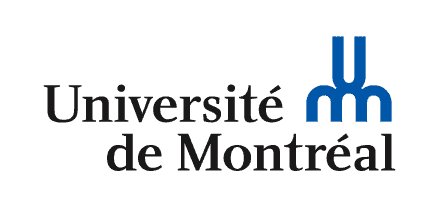

A formal definition of creativity
LLM, softmax and temperature
Marcello Vitali-Rosati
Montréal - DHSI - 02-06-2025
AI vs HI ?
The “human privilege”: enjoying strawberries and cream
Arguments from Various Disabilities. These arguments take the form, “I grant you that you can make machines do all the things you have mentioned but you will never be able to make one to do X”. Numerous features X are suggested in this connexion. I offer a selection:
Be kind, resourceful, beautiful, friendly, have initiative, have a sense of humour, tell right from wrong, make mistakes , fall in love, enjoy strawberries and cream, make some one fall in love with it, learn from experience, use words properly, be the subject of its own thought, have as much diversity of behaviour as a man, do something really new. […]
No support is usually offered for these statements. I believe they are mostly founded on the principle of scientific induction. A man has seen thousands of machines in his lifetime. From what he sees of them he draws a number of general conclusions.Turing, Computer Machinery and Intelligence, 1950
Everything that can be defined unambiguously can be modeled
You insist that there is something that a machine can’t do. If you will tell me precisely what it is that a machine cannot do, then I can always make a machine which will do just that. Von Neuman
Questioning the definition of intelligence
How do we define intelligence?
How do we define the different forms of intelligent behavior?
Intelligence definition models
- define natural language
- define specific concepts
- define feelings
- define consciousness
- …
- define creativity
What does a particular algorithm tell us about intelligent behavior?
- Let’s avoid essentializing the “human”, the “machine”, the “intelligence”.
Creativity: the wrong question
Can a machine be creative?
Is chatGPT creative?
Creativity: the good question
What is creativity?
How can we give a formal definition of creativity?
Temperature as creativity
\[\sigma(z_i) = \frac{e^{\beta z_{i}}}{\sum_{j=1}^K e^{z_{j}}} \ \ \ for\ i=1,2,\dots,K\]
General (very simplified) principle of an LLM
Guessing the most probable following token
Very simplified example
- I remember the summer nights.
- I remember the warm summer nights.
- I remember the cool summer nights.
- I remember the laughter.
- I remember the joyful laughter.
- I remember the duck.
- I remember the friends from high school.
- I remember the friends from college.
- I remember the friends from work.
- I remember the friends from the park.
nights = 3
laughter = 2
duck = 1
friends = 4Learning probability
An LLM is a model that learns the probability of a token \(e_t\) given the previous token \(e_{t−1}\). That is:
\[P(e_t | e_{t-1})\]
Softmax!
\[\sigma(z_i) = \frac{e^{z_{i}}}{\sum_{j=1}^K e^{z_{j}}} \ \ \ for\ i=1,2,\dots,K\]
\[z_1 = 3\] \[z_2 = 2\] \[z_3 = 1\] \[z_4 = 4\]
The softmax is the function \[\sigma(z_i)\]
We want:
\[\sigma(3) = ?\]
\[\sigma(2) = ?\]
\[\sigma(1) = ?\]
\[\sigma(4) = ?\]
The sum of these 4 values must give 1 (so we’ll have the percentages, by multiplying by 100)
\[\frac{e^{z_{i}}}{\sum_{j=1}^K e^{z_{j}}}\]
The numerator of the fraction is the exponential function which has base \(e\), Euler’s number and exponent \(z_i\), the digit to which we are applying the equation.
The denominator is the sum of all the results of the exponential function applied to the digits we want to process.
In our case, the denominator will be:
\(e^3 + e^2 + e^1 + e^4 = 84.791024884\)
(\(e = 2.71828...\))
And so:
\(\sigma(3) = \frac{e^3}{84.791024884} = 0.23\)
\(\sigma(2) = \frac{e^2}{84.791024884} = 0.10\)
\(\sigma(1) = \frac{e^1}{84.791024884} = 0.03\)
\(\sigma(4) = \frac{e^4}{84.791024884} = 0.64\)
We therefore have the following probabilities:
- nights = 23%
- laughter = 10%
- duck = 3%
- friends = 64%
Yeah… but what about creativity?
A mathematical twist
\[\sigma(z_i) = \frac{e^{\beta z_{i}}}{\sum_{j=1}^K e^{\beta z_{j}}} \ \ \ for\ i=1,2,\dots,K\]
Temperature?
\[T = \frac{1}{\beta}\]
the higher the temperature, the more disorganized the system is
The effect
If we increase the temperature (and thus decrease \(\beta\)), the difference between the percentages will be reduced
Exemple
temperature to 5 and thus \(\beta = \frac{1}{5} = 0.2\)
Our 4 digits will be transformed as follows:
- nights: 3 x 0.2 = 0.6
- laughter: 2 x 0.2 = 0.4
- duck: 1 x 0.2 = 0.2
- friends: 4 x 0.2 = 0.8
Our denominator will therefore be:
\(e^{0.6} + e^{0.4} + e^{0.2} + e^{0.8} = 6.760887185\)
And if we do the calculations with these new numbers (it is intuitive that the exponent being smaller, the result will be lower, thus the gap lower):
\(\sigma(3) = \frac{e^{0.6}}{6.760887185} = 0.27\)
\(\sigma(2) = \frac{e^{0.4}}{6.760887185} = 0.22\)
\(\sigma(1) = \frac{e^{0.2}}{6.760887185} = 0.18\)
\(\sigma(4) = \frac{e^{0.8}}{6.760887185} = 0.33\)
The new probabilities:
- nights = 27%
- laughter = 22%
- duck = 18%
- friends = 33%
Completely new?
smoothing…
And new words? Also possible!
What is “creativity” according to this formal definition?
A behavior that deviates from a normal probability distribution
Is it “the good definition”?
Wrong question
But for me, creativity is more like…
GIVE THE F***(ORMAL) DEFINITION!